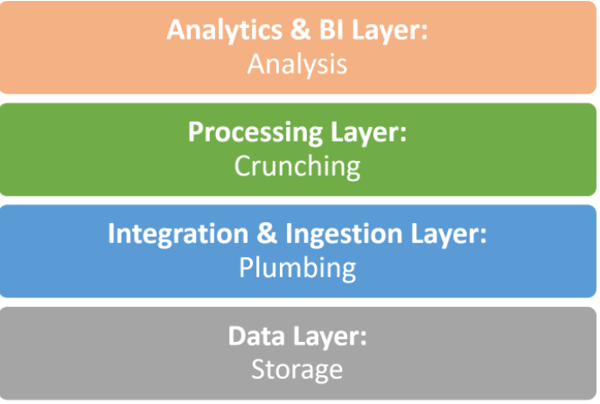Typically data warehouses and marts contain normalized data gathered from a variety of sources and assembled to facilitate analysis of the business.
Big data architecture stack 6 layers in order.
Security layer this will span all three layers and ensures protection of key corporate data as well as to monitor manage and orchestrate quick scaling on an ongoing basis.
Organizations are realizing that creating a custom technology stack to support a big data fabric.
As you see in the preceding diagram big data architecture or unified architecture is comprised of several layers and provides a way to organize various components representing unique functions to.
Technologies part 3.
Towards a generalized big data technology stack.
This is the stack.
The speed layer is used in order to provide results in a low latency near real time fashion.
We propose a broader view on big data architecture not centered around a specific technology.
New big data solutions will have to cohabitate with any existing data discovery tools along with the newer analytics applications to the full value from data.
Part 2 of this big data architecture and patterns series describes a dimensions based approach for assessing the viability of a big data solution.
The data warehouse layer 4 of the big data stack and its companion the data mart have long been the primary techniques that organizations use to optimize data to help decision makers.










